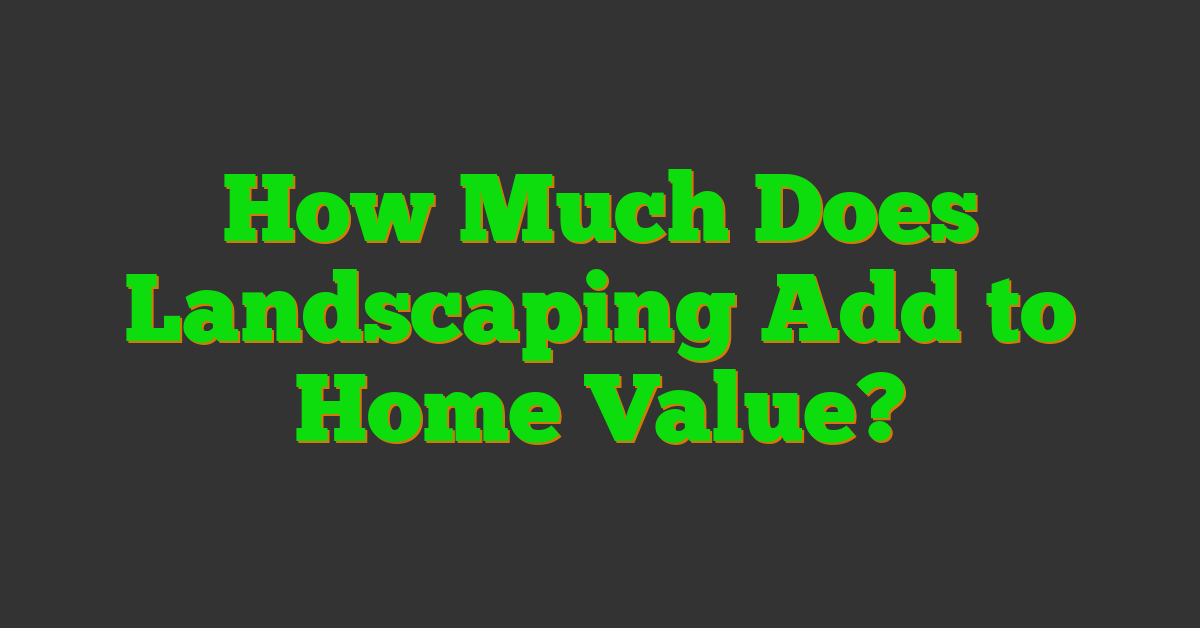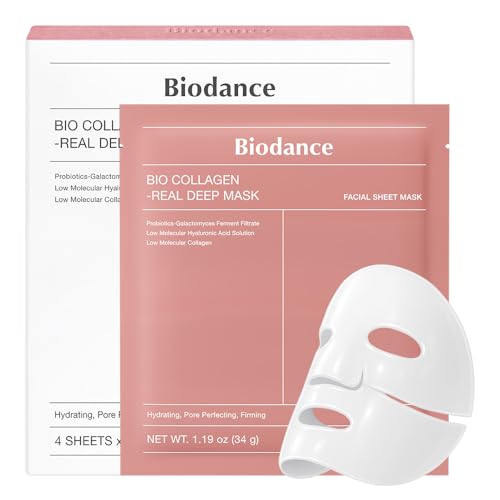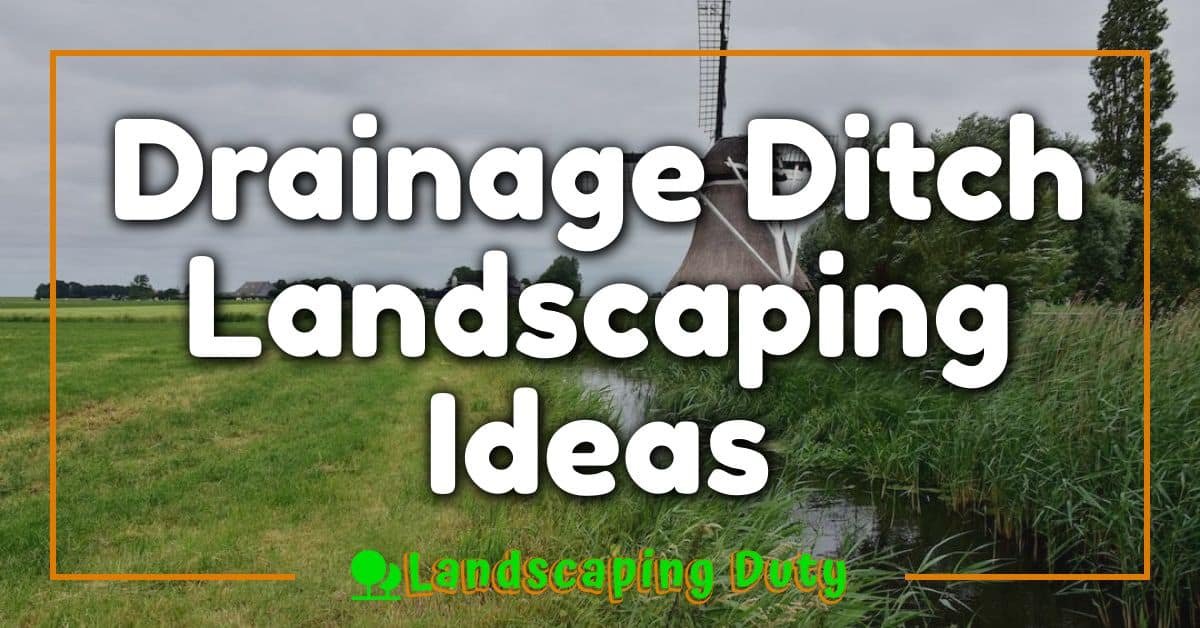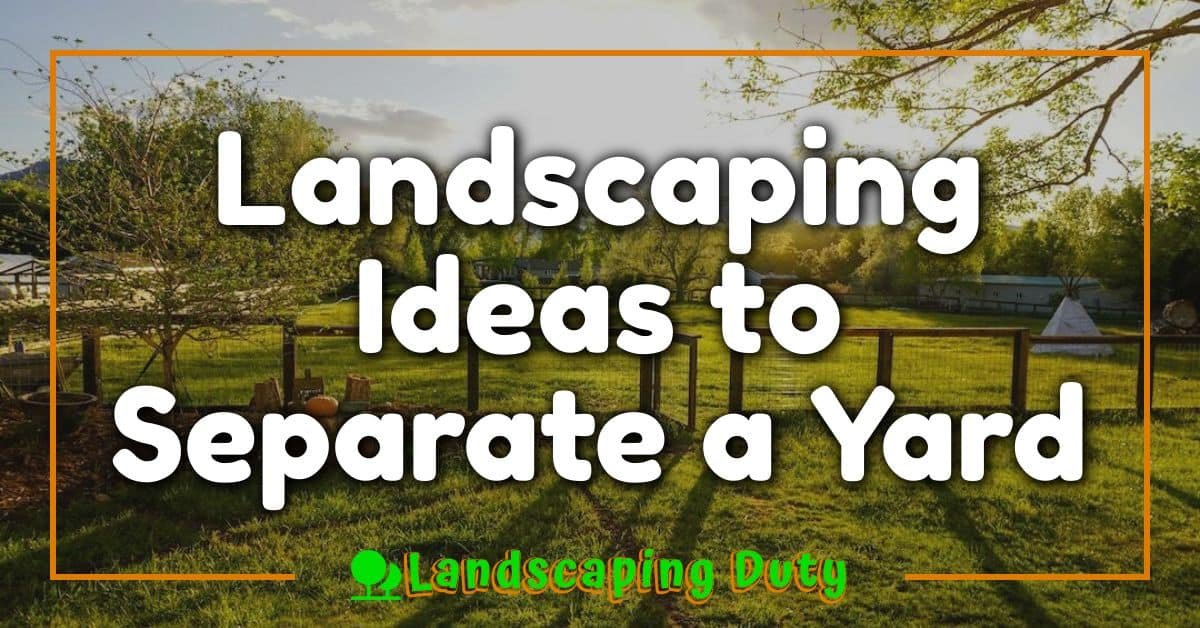If you’re a homeowner, you’re probably wondering what you can do to increase the value of your property. One way to do this is through landscaping. Landscaping can make a significant difference in the value of your home, but how much does it actually add? In this article, we’ll explore the impact of landscaping on home value and the key elements that affect it.

When it comes to landscaping, there are a few things to keep in mind. The first is that not all landscaping is created equal. Some landscaping projects can increase your home’s value significantly, while others may not add much value at all. The second thing to keep in mind is that landscaping is an investment. While it can add value to your home, it can also be expensive. So, it’s important to consider the return on investment (ROI) when planning your landscaping project.
Key Takeaways
- Landscaping can significantly increase the value of your home.
- The key landscaping elements that affect home value are decks, mature trees, and xeriscaping.
- Maximizing ROI with strategic landscaping involves considering maintenance and sustainability, as well as the role of professional landscaping services.
The Impact of Landscaping on Home Value

https://www.youtube.com/watch?v=iDuU6Q4SU8I&embed=true
Understanding the Value Addition
Landscaping can have a significant impact on the value of your home. According to the American Society of Landscape Architects (ASLA), investing 10% of your home’s value in landscaping can increase its perceived value by as much as 12%. That means if you have a $400,000 home, investing $40,000 in landscaping could increase its perceived value by up to $48,000.
The value addition of landscaping depends on several factors such as the quality of the work, the types of plants used, and the overall design. For example, a well-designed landscape that includes mature trees and shrubs can add more value than a simple lawn with a few flower beds. Similarly, a professionally installed hardscape such as a stone patio or a water feature can add more value than a DIY project.
Survey Data and Expert Opinions
Several surveys have been conducted to determine the impact of landscaping on home value. According to a study by the National Association of Realtors, 74% of real estate agents believe that a well-landscaped yard can add up to 10% to the value of a home. Another study by the ASLA found that a well-landscaped home can add approximately 6 to 13% in value compared to a property with no landscaping.
Experts suggest that investing in landscaping can be a smart financial decision for homeowners. In addition to increasing the value of your home, it can also improve its curb appeal and make it more attractive to potential buyers. However, it’s important to keep in mind that not all landscaping projects are created equal. It’s essential to work with a professional landscaper who can help you design and execute a plan that will maximize the value of your property.
In summary, landscaping can add significant value to your home, but the amount of value added depends on several factors. By investing in professional landscaping, you can increase the perceived value of your home, improve its curb appeal, and make it more attractive to potential buyers.
Key Landscaping Elements That Affect Home Value
https://www.youtube.com/watch?v=X-Y6Z89r7Cs&embed=true
When it comes to increasing the value of your home, landscaping can be a great investment. However, not all landscaping elements are created equal. Some features can significantly boost your home’s worth, while others may not have as much impact. Here are some of the key landscaping elements that can affect your home’s value:
Trees and Mature Plantings
Trees and mature plantings are some of the most valuable landscaping elements for increasing home value. According to a Bankrate article, “trees can add up to $9,000 to your home’s value.” Mature trees can also provide shade and privacy, which can be attractive to potential buyers.
Lawn Quality and Maintenance
A well-maintained lawn is a must for any home with landscaping. A lush, green lawn can make your home look more inviting and well cared for. In contrast, a patchy or brown lawn can detract from your home’s curb appeal. Regular lawn maintenance, such as mowing, fertilizing, and watering, can help keep your lawn looking its best.
Hardscaping Features
Hardscaping features, such as patios, decks, water features, and fire pits, can add value to your home. These features can create additional living spaces and enhance the overall aesthetic appeal of your property. However, it’s important to choose hardscaping features that are well-designed and high-quality. Poorly constructed or outdated hardscaping can actually decrease your home’s value.
Outdoor Living Spaces
Outdoor living spaces, such as outdoor kitchens and seating areas, are becoming increasingly popular among homeowners. These spaces can add value to your home by providing additional living and entertaining space. When designing outdoor living spaces, consider factors such as lighting, privacy, and functionality.
In addition to these key elements, other factors that can impact your home’s value include sustainable landscaping practices, plant size and type, low maintenance landscaping, and professional landscape design. By investing in the right landscaping elements for your property, you can increase your home’s value and make it more attractive to potential buyers.
Maximizing ROI with Strategic Landscaping
https://www.youtube.com/watch?v=wSxIIntxb0Y&embed=true
Landscaping can be one of the most effective ways to increase the value of your home. However, not all landscaping projects are created equal. To maximize your return on investment (ROI), you need to strategically plan your landscaping project. Here are some tips to help you get the most out of your investment.
Calculating Return on Investment
Before starting any landscaping project, it’s important to calculate the potential ROI. According to the American Society of Landscape Architects (ASLA), a well-designed landscaping project can yield a return on investment of up to 150%. However, the ROI can vary depending on the project and the market. Therefore, it’s important to consult with a professional landscaper to get an accurate estimate of the potential ROI.
Cost vs. Benefit Analysis
When planning your landscaping project, you need to consider the cost vs. benefit analysis. You don’t want to invest more money in your landscaping project than you can recoup in the real estate transaction. Therefore, it’s important to choose low-maintenance and cost-effective landscaping options that can increase your home’s value without breaking the bank.
Choosing the Right Landscaping for Your Market
To get the most out of your investment, you need to choose the right landscaping for your market. Different markets have different preferences when it comes to landscaping. Therefore, it’s important to research your market and choose landscaping options that appeal to potential buyers. For example, if you live in a hot and dry climate, you may want to consider xeriscaping, which is a low-maintenance and water-efficient landscaping option.
In conclusion, strategic landscaping can be a great way to increase the value of your home. By calculating the potential ROI, conducting a cost vs. benefit analysis, and choosing the right landscaping for your market, you can maximize your investment and appeal to potential buyers. Remember to consult with a professional landscaper and maintain editorial integrity when researching your options.
Maintenance and Sustainability Considerations
https://www.youtube.com/watch?v=K7v3QjRkzqQ&embed=true
« Best Landscaping Plants for Tennessee: Recommendations from Local Experts What Does Landscaping Include: A Quick Guide »
When it comes to landscaping, maintenance is a crucial consideration. A well-maintained yard can add significant value to your home, while a poorly maintained one can detract from it. One way to ensure that your yard stays in good condition is to opt for low-maintenance landscaping. This type of landscaping involves using plants and materials that require minimal upkeep, such as native plants that are adapted to your climate. By choosing low-maintenance options, you can reduce the amount of time and money you spend on landscape maintenance, while still enjoying a beautiful and functional outdoor space.
Low-Maintenance Landscaping
When planning your landscaping, consider using low-maintenance materials such as gravel, mulch, and stone. These materials require little to no watering, mowing, or fertilizing, which can save you time and money in the long run. In addition, native plants that are adapted to your climate are often low-maintenance, as they are already well-suited to the local conditions. By choosing plants that are well-suited to your area, you can reduce the amount of watering and fertilizing needed to keep them healthy.
Eco-Friendly Practices and Materials
In addition to low-maintenance landscaping, consider using eco-friendly practices and materials in your yard. This can include using organic fertilizers and pest control methods, as well as installing a rain barrel or other water-saving devices. By using sustainable practices, you can reduce your impact on the environment, while also creating a healthier and more beautiful outdoor space.
Routine lawn care is also important for maintaining a sustainable yard. This includes regular mowing, watering, and fertilizing, as well as aerating and dethatching as needed. By keeping your lawn healthy and well-maintained, you can reduce the amount of water and fertilizer needed to keep it looking its best.
In South Carolina, where water conservation is a concern, it’s especially important to consider sustainable landscaping practices. By choosing low-maintenance and sustainable options, you can create a beautiful and functional outdoor space, while also reducing your impact on the environment.
The Role of Professional Landscaping Services
https://www.youtube.com/watch?v=woGcihEymvY&embed=true
If you’re looking to increase your home’s value, hiring a professional landscape designer is a smart investment. Not only can they create a beautiful outdoor space that will impress potential buyers, but they can also help you make the most of your property’s natural features.
Benefits of Hiring a Landscape Designer
A professional landscape designer can work with you to create a cohesive design that complements your home’s architecture and enhances its curb appeal. They can also help you choose the right plants and materials for your climate and soil type, ensuring that your landscaping will thrive for years to come.
In addition to boosting your home’s value, a well-designed landscape can also improve your quality of life. It can provide a peaceful retreat where you can relax and unwind, or a space for entertaining family and friends.
The Consultation Process
When you hire a landscape designer, the first step is typically a consultation. During this meeting, the designer will assess your property and discuss your goals and budget. They may also ask about your lifestyle and preferences to ensure that the design reflects your personality and needs.
After the consultation, the designer will create a detailed plan that includes a plant list, hardscaping features, and a timeline for installation. They will also provide an estimate for the project’s cost, so you can make an informed decision about whether to move forward.
Long-Term Landscape Management
Once your new landscape is installed, it’s important to keep it looking its best. Routine lawn care, pruning, and fertilization will help your plants thrive and prevent problems like pests and disease.
If you don’t have the time or expertise to maintain your landscape, consider hiring a professional to handle the job. They can provide ongoing maintenance services like mowing, weeding, and seasonal cleanups, ensuring that your investment continues to pay off for years to come.
Overall, hiring a professional landscape designer can be a smart investment that adds value to your home and enhances your quality of life. With the right design and ongoing maintenance, your landscape can be a source of pride and enjoyment for years to come.
Curb Appeal and First Impressions
https://www.youtube.com/watch?v=MH5ae9Hbeg8&embed=true
When it comes to selling your home, first impressions matter. The exterior of your home is the first thing potential buyers will see, and it sets the tone for the rest of the visit. That’s why curb appeal is so important.
Enhancing the Front Yard and Entryway
One of the most effective ways to improve your home’s curb appeal is by enhancing the front yard and entryway. This could include adding new plants and flowers, trimming overgrown bushes, and ensuring that your lawn is well-maintained. You could also consider adding a pathway or walkway to your front door to create a welcoming entrance.
Visual and Aesthetic Improvements
In addition to maintaining your front yard, there are several visual and aesthetic improvements you can make to enhance your home’s curb appeal. For example, you could repaint your front door or add new hardware to give it a fresh look. You could also update your house numbers and mailbox to create a cohesive, polished look.
Remember, the goal is to make your home look inviting and well-maintained from the outside. By taking the time to enhance your home’s curb appeal, you’ll make a great first impression on potential buyers and increase the overall value of your home.
Landscaping and the Pandemic: A Shift in Outdoor Space Value

The COVID-19 pandemic has led to a significant shift in the way we use and value outdoor spaces. With more time spent at home, homeowners are increasingly investing in outdoor living areas to create a relaxing and functional space for themselves and their families. As a result, landscaping has become a crucial factor in determining home value.
Increased Demand for Outdoor Living Areas
According to a Forbes article, the pandemic has led to an increased demand for outdoor living areas. Homeowners are now looking for ways to create a functional and comfortable outdoor space that can be used for relaxing, entertaining, and even working. As a result, properties with well-designed outdoor living spaces are now in high demand and can command a premium price.
Adapting Landscaping to New Lifestyles
As homeowners spend more time at home, they are looking for ways to make their outdoor spaces more functional and adaptable to their new lifestyles. This has led to a shift in landscaping trends, with an emphasis on creating multi-functional spaces that can be used for a variety of activities.
For example, homeowners are now investing in outdoor kitchens, dining areas, and fire pits to create a space that can be used for entertaining. They are also incorporating features such as outdoor heaters and lighting to extend the use of their outdoor space into the colder months.
In addition, there has been a growing trend towards sustainable landscaping practices, such as using native plants and incorporating water-saving features. These features not only help to reduce water usage but also add to the overall value of the property.
In conclusion, the pandemic has led to a significant shift in the way we value outdoor spaces, with landscaping now playing a crucial role in determining home value. As a homeowner, investing in a well-designed outdoor living area can not only enhance your quality of life but also add significant value to your property.
Frequently Asked Questions

What are the top ways that landscaping can enhance my home’s value?
Landscaping can enhance your home’s value in various ways. A well-maintained lawn, attractive plants, and a beautiful garden can significantly improve your home’s curb appeal. It can also create a positive first impression for potential buyers, which can lead to a higher selling price.
Can installing landscape lighting boost my property’s worth?
Yes, landscape lighting can boost your property’s worth. It can make your home look more inviting and attractive, especially at night. It can also increase your home’s security, which is a valuable feature for many buyers.
Which plants are known to contribute to increasing a home’s market value?
Plants that are low-maintenance, drought-tolerant, and native to your area are known to contribute to increasing a home’s market value. Some examples include succulents, lavender, and ornamental grasses.
How does the cost of landscaping compare to the value it adds to my home?
The cost of landscaping can vary depending on the scope of the project, but studies have shown that it can add significant value to your home. According to the National Association of Realtors, homeowners can expect a 100% return on investment for their landscaping efforts.
In what ways does a well-maintained garden contribute to a property’s appeal?
A well-maintained garden can contribute to a property’s appeal by creating a peaceful and inviting atmosphere. It can also provide a space for relaxation and entertainment, which is a valuable feature for many buyers. Additionally, a well-maintained garden can improve air quality and reduce noise pollution.
What landscaping features offer the best return on investment when selling a home?
Some landscaping features that offer the best return on investment when selling a home include a well-maintained lawn, attractive plants, and outdoor living spaces such as a patio or deck. Additionally, features that improve energy efficiency, such as shade trees or a green roof, can be highly desirable for buyers.










